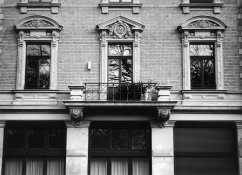ChrisBCS: Depending on how you develop and how monstrous the prints are, you can make huge prints from many brands of 120 film without having any issues with grain. What kind of camera and lenses do you have? If you are not very experienced with film photography, you might actually be better off with a more traditional film with a higher exposure latitude.
And when it comes to colour filters: The Adox CMS II will behave similar to most other b&w films, but due to its very slow speed, you will soon reach exposure times outside the safe hand-held range if you also add any filter. Also, if you really want to take advantage of the film's resolution, I would be hesistant to put anything more than necessary, not even a colour filter, into the optical system.
And when it comes to colour filters: The Adox CMS II will behave similar to most other b&w films, but due to its very slow speed, you will soon reach exposure times outside the safe hand-held range if you also add any filter. Also, if you really want to take advantage of the film's resolution, I would be hesistant to put anything more than necessary, not even a colour filter, into the optical system.
Last edited:


 .
. ..!
..!

